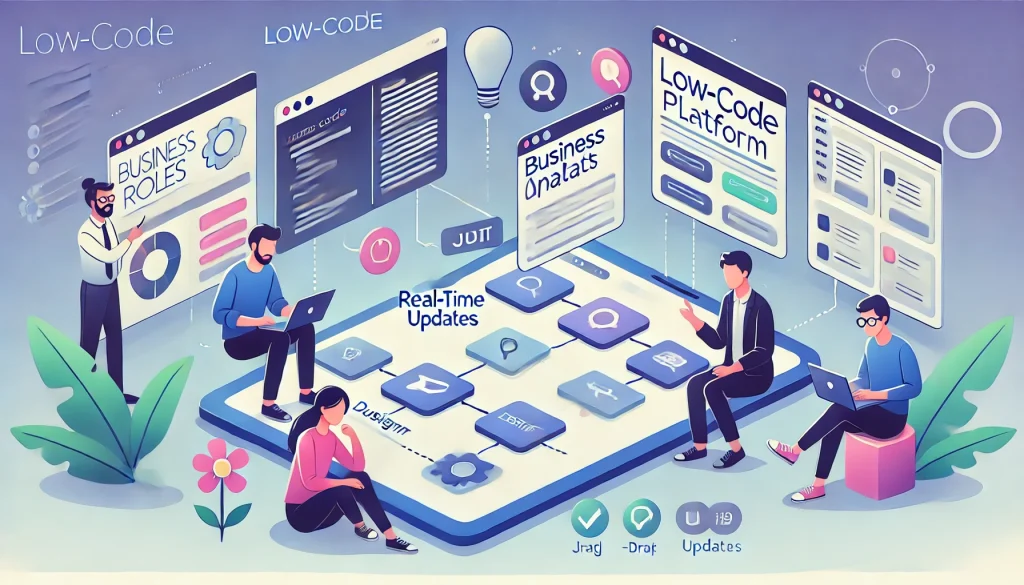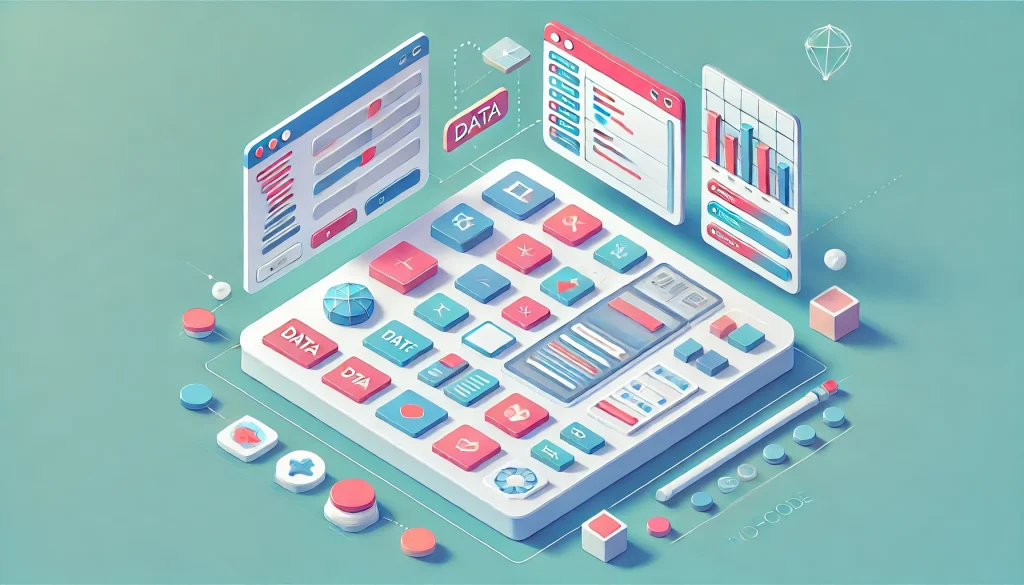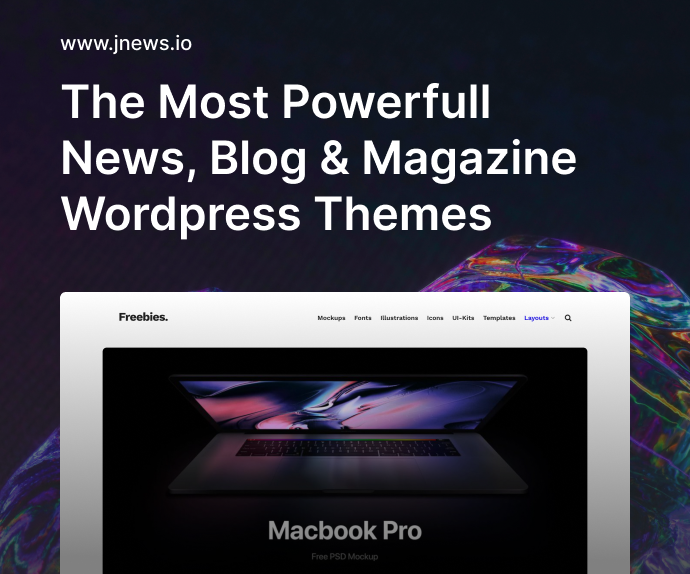Building software used to demand months of coding and specialized knowledge. But low-code/no-code (LCNC) platforms are changing that—letting citizen developers and small businesses create apps with minimal coding or purely through visual interfaces. By 2025, these platforms have become even more robust, bridging advanced features like integrations and AI with a simplified user experience. Below, we’ll discuss how Bubble, OutSystems, WordPress’s expansions, and other LCNC solutions propel app creation for people with limited dev skills, plus where they still fall short.

1. The Rise of Low-Code/No-Code
Why It’s Happening
- Talent Shortage: Many organizations lack enough devs to handle all digital demands. LCNC tools fill the gap, letting non-developers quickly produce prototypes or internal tools.
- Rapid Prototyping: Designers or entrepreneurs can spin up MVPs (Minimum Viable Products) without waiting for a dev team.
- Cost Efficiency: Freed from hand-coding everything, businesses can focus dev resources on core complexities or specialized logic.
2025 Outlook
- Platforms incorporate AI to suggest workflows, auto-generate data models, or refine UI layouts.
- Enhanced security and compliance modules for more enterprise usage.
- Maturing ecosystems and expansions, making advanced features (like real-time updates, concurrency management) more accessible.
2. Bubble
What It Offers
- Visual Builder: Drag-and-drop UI elements, define workflows via point-and-click logic.
- Database: Built-in DB or connect external data sources.
- Plugin Ecosystem: Add integrations for payment processing, analytics, or third-party APIs.
Real-World Examples:
- Startups building entire MVP web apps—like marketplaces or scheduling platforms—without a single line of code.
- Nonprofits launching event registration or membership portals.
Limitations:
- Scaling: Large-scale performance might need custom solutions or higher-tier Bubble plans.
- Custom Code: Limited at times—some advanced logic can be tricky without plugin or “hacky” approaches.
3. OutSystems
Why It’s Powerful
- Enterprise Low-Code: Focus on end-to-end development for web and mobile apps, with strong DevOps and security options.
- Visual Modeling: Database design, business logic, and UI can all be done in a unified environment.
- Integration: Connect with legacy systems or external APIs via built-in connectors.
Real-World Examples:
- Large organizations bridging existing ERP data into new web or mobile front-ends.
- Banking or insurance solutions that require some compliance modules (OutSystems offers governance capabilities).
Limitations:
- Licensing Costs: For enterprise features, out-of-the-box free usage may be limited.
- Learning Curve: The environment is comprehensive—non-technical users might find advanced features overwhelming.
4. WordPress’s Low-Code Tools
Why They’re Still Relevant
- Site Building: WordPress powers a huge share of websites. With block editors (Gutenberg) plus plugins, you can design robust pages or membership sites.
- Plugin Ecosystem: Tools like Elementor, Beaver Builder, or WP Page Builders let you visually compose advanced layouts.
- Business Apps: E-commerce with WooCommerce or no-code workflows with form builders (e.g., Gravity Forms) turning into interactive dashboards.
Real-World Examples:
- Small businesses with custom membership or e-learning sites built purely on WordPress plugins.
- Nonprofits that rely on WP form builders for event registrations, minimal coding required.
Limitations:
- Performance: Large plugin combos can degrade site speed if not carefully curated.
- Security: WordPress’s plugin-based approach demands consistent updates and security checks.
5. Airtable Automations & Interfaces
Why It’s Notable
- Database + UI: Airtable merges spreadsheet simplicity with relational database power.
- Automations: Script minimal logic or connect to external services.
- Interfaces: Build simple dashboards or forms for end-users, bridging data queries and visuals.
Use Cases:
- Quick internal tools—like project trackers, CRM solutions, or content planning.
- Replaces the monolithic approach of custom-coded data management with a no-code approach that scales for smaller teams.
Limitations:
- Complex Logic: For advanced business rules or heavy concurrency, you may outgrow Airtable’s automation features.
- Pricing: Free tier is generous, but some expansions—like advanced automation runs or higher record counts—need paid plans.
6. Mendix
Why It’s Enterprise-Friendly
- Collaboration: Web-based design plus local IDE, bridging citizen dev and professional dev.
- Full Dev Lifecycle: Tools for version control, testing, deployment, environment management.
- Extensibility: Create custom code modules in Java if needed, while mostly using drag-and-drop for standard flows.
Real-World Examples:
- Corporations digitizing internal processes (HR portals, claim management) with minimal coding.
- Partnerships with large consultancies for multi-level app dev at scale.
Limitations:
- Pricing: Enterprise-level licensing can be steep.
- Learning Curve: Rich platform requires training to fully exploit microflows, domain model, etc.
7. Microsoft Power Apps

Why It’s Big
- Part of Power Platform: Tightly integrates with Office 365, Dynamics, and Azure.
- Drag-and-Drop UI: Build mobile or web apps connecting to SharePoint, SQL, or external APIs.
- AI Builders: Vision, text analytics, or forms processing can be embedded with minimal code.
Use Cases:
- Citizen devs building small departmental apps for data entry or dashboards.
- Quick line-of-business solutions bridging existing Microsoft ecosystems.
Limitations:
- Advanced Logic: Might require “Power Automate” flows or premium connectors, leading to additional costs.
- Vendor Lock-In: Deeper reliance on the Microsoft stack can hamper multi-cloud or open-source transitions.
8. Webflow (with Logic & Membership)
Why It’s Modern
- Design-Centric: Touts pixel-perfect control for front-end sites, plus no-code approach to layout.
- Logic & Membership: Now includes basic “logic flows,” membership gating, e-commerce functionality.
- Animations & Interactions: Natively supports advanced front-end animations with minimal scripting.
Real-World Examples:
- Agencies building marketing sites or partial e-commerce for smaller brands.
- Startups wanting dynamic membership or subscription content without custom coding.
Limitations:
- Scalability: Larger apps with complex data logic might surpass Webflow’s scope.
- Vendor Lock-In: Hard to export dynamic features (serverless or advanced backend) if you outgrow Webflow.
9. Wappler
Why It’s Distinct
- Low-Code for Fullstack: Combines front-end design plus node.js or PHP-based back-end.
- Offline Desktop: A local IDE that can visually build web apps with database interactions.
- Integration: Docker-based dev flows, allowing advanced hosting or custom code injection.
Use Cases:
- Devs comfortable with Node or PHP but wanting a visual builder for quick prototypes or client projects.
- Hybrid approach bridging no-code workflows with the ability to drop into code for custom logic.
Limitations:
- License: Basic usage is free with limitations, advanced features behind subscription.
- Learning: More complex than purely drag-and-drop solutions.
10. Budibase (Open Source)
Why It’s Notable
- Self-Hosted: Open-source platform for building internal tools, forms, or dashboards.
- Drag-and-Drop UI: Connect to data sources (PostgreSQL, MySQL, REST) and create custom CRUD apps.
- Automation: Basic triggers and data transformations, helpful for in-house admin panels or simple user portals.
Real-World Examples:
- Startups with an internal database wanting a quick admin UI without coding a custom CRUD.
- Devs needing local hosting or customization not found in closed-source solutions.
Limitations:
- Features: More limited than high-end enterprise LCNC solutions (like OutSystems or Mendix).
- Community: While open-source fosters support, official docs or advanced plugins can lag behind bigger players.
Potential Limitations & Real-World Integration
- Scalability: Large or complex apps might surpass LCNC performance or require advanced dev knowledge eventually.
- Vendor Lock-In: Some platforms store data in proprietary formats or rely heavily on platform-specific APIs.
- Security & Governance: Without dev oversight, citizen devs can create insecure workflows. Best to incorporate code reviews or gating.
- Complex Logic: Tools handle basic logic well, but highly intricate business rules or real-time concurrency often require custom-coded microservices or specialized frameworks.
Real Examples:
- A marketing manager spinning up a quick lead-generation funnel in Bubble without waiting on dev resources.
- A mid-sized dev team using Mendix or OutSystems to unify multiple internal apps that share data, with minimal custom code for advanced logic.
- A small e-commerce site using advanced WordPress plugin combos for membership features or partial marketplace logic.










